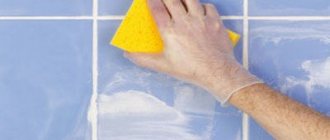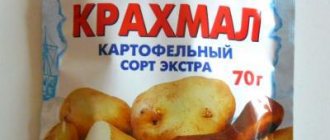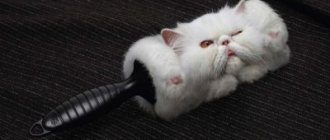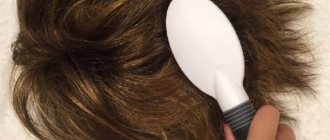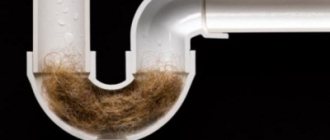GOI paste, developed back in the distant 1930s in the bowels of the State Optical Institute, has not lost its former popularity even now. You can hardly find an owner who doesn’t have a piece of this green (and sometimes other colors) product hidden somewhere. Let us remind you how to use GOI paste and give some tips on the safe use of this “greetings from the past.”
Types of GOI paste
Today there are four types of GOI paste on the market:
- No. 4 is used for primary processing of the material, if it has not been processed before;
- No. 3 gives the surface a matte appearance, eliminating all remaining strokes;
- No. 2 and No. 1 finish what their “older relatives” started, making the surface glossy and finishing the polishing.
The type of GOI paste depends on the size of the abrasive used in its manufacture. The paste was produced in a hard (bar) or softer (box) version. Why do we talk about GOI paste in the past tense? The fact is that at the moment, not a single Russian plant has the right to produce this product due to the presence of chromium oxide in its composition, which is hazardous to health - this compound is a carcinogen, i.e. it accelerates the development of cancer cells.
Chemical composition
The material is made in the form of rectangular bars of green color with a dark or light shade. The main components are chromium oxide, various binders and other additional components. Depending on the type of paste, the main abrasive makes up from 65 to 80 percent of the total volume. In addition to bars, the paste is produced in plastic containers and as an impregnation for felt circles in ready-made form. The soft circle is supplied for sale already impregnated with the required amount of GOI paste and is ready for use.
You can also determine the composition of the paste by its color. The more chromium oxide in its composition, the lighter it is and is characterized by higher abrasive abilities. The darkest, almost black paste with a green tint is used for fine polishing and imparting a mirror shine to surfaces, while the lightened one is used for rough grinding.
Preparation for polishing
The action of GOI paste consists of the work of small abrasive particles, which, through friction, erase irregularities from the surface. Before you start polishing, you need to prepare a small piece of soft cloth and soak it in gasoline (it is not necessary to use car fuel; gasoline for lighters will be enough). A small amount of paste is applied to the material. Using the prepared tool, you should first wipe the unnecessary metal surface to remove excessively large abrasive particles, otherwise the desired surface will not be polished, but damaged. You don't want to see a scratch on the surface after polishing, right?
Glass
When the car moves, grains of dust and debris carried by the oncoming air flow intensively damage the outer surface of the interior glazing with sharp edges. Additional damage to the windshield in the form of chips and cracks is caused by small stones flying out from under the wheels of oncoming traffic, as well as grains of sand that fall on the windshield wiper blades. When the window lifters are repeatedly activated, the door windows are scratched by solid dust particles deposited on the inside of the seals - velvet. Excessive efforts when cleaning glass from adhering ice and snow with a hard scraper or wiping with a dry, rough cloth also add mechanical damage.
As a result, the glass becomes dull, cracks, scratches and abrasions impair visibility, and at night they distort the headlights of oncoming cars, blinding the driver.
Shallow glass damage (up to 300 microns), microcracks, chips and local abrasions from wipers can be eliminated by grinding and polishing the glass using GOI paste.
In the presence of deep scratches, extended cracks and chips, grinding can lead to loss of transparency and curvature of the glass surface. In this case, it is advisable to replace the glass with a new one.
Before polishing car windows with GOI paste, they must be thoroughly washed and dried. It is recommended to highlight defective areas with a marker on the inside of the glass. Adjacent parts of the roof, pillars and hood must be protected from accidental damage with masking tape or other material. When polishing (especially using power tools), be careful not to damage the glass.
To polish the windshield, you should use only GOI finishing paste with a minimum size of abrasive particles (No. 1).
Polishing
After preparing the polishing tool, you can begin the process. To properly polish a surface, you need to carefully, without sudden movements or strong pressure, rub the desired area with polish until the surface becomes smooth. If necessary, you should return to the previous stage (if the surface requiring polishing has a large area, the GOI paste will quickly run out).
We recommend: 11 products + review of how and how to remove limescale in the bathroom
If the product has many flaws, you should use not just one type of paste, but several. So, for initial treatment, GOI paste No. 4 is applied to the rag, as the number of flaws decreases - No. 3, and so on, until the surface takes the desired form.
The treated element should be washed with kerosene in order to remove any remaining abrasive from it. In the absence of kerosene, ordinary running water can be used, but this is not recommended, since under improper conditions there is a high risk of rust. Considering that many polish the necessary surfaces in the garage, where there is often high humidity, this point should not be discounted.
Advice
Carry out polishing work outside residential premises. The ideal place would be a garage, workshop with good ventilation, or some open space. Polishing with GOI paste requires rinsing with kerosene, and inhaling its vapors is dangerous to health.
Features of the material and scope of application
Organic glass is produced from acrylic acid through various chemical reactions. This material is similar in various parameters to ordinary glass, but its nature is organic (hence the name of the material). There are several synonymous words - plexiglass, acryplast, carboglass, etc.
Among the main characteristics of plexiglass we can highlight:
- ease;
- softness;
- ability to easily transform;
- flexibility during processing;
- high throughput;
- When exposed to certain chemicals, plexiglass decomposes.
Polishing soft metal products
GOI paste can be used to polish items made of any metals, including soft ones such as silver and gold. This procedure will help restore the former shine of your favorite utensils. But polishing such objects requires a special approach.
Let's look at the polishing process using silver spoons as an example.
- Before carrying out the procedure, you should thoroughly wash the spoons and clean them with a stiff brush (an ordinary toothbrush is ideal) with tooth powder applied to it.
- Then a solution is prepared containing ammonia, tooth powder and soap shavings. All this is mixed until completely dissolved.
- Spoons are soaked in the resulting solution.
- Then the mixture should be put on fire and brought to a boil.
- The spoons are removed, washed in running water and then wiped with GOI paste.
It would be better to use types of paste No. 1 or No. 2, since the other two can leave scratches on expensive utensils.
Video
Found an error in the text? Select it, press Ctrl + Enter and we will fix everything!
Polishing copper jewelry after patination. Video tutorial. #video tutorial@ww_mk_ >#polishing@ww_mk_idea
Wire wrap. MK. Ideas. Examples. post pinned
Wire wrap. MK. Ideas. Examples. post pinned
GOI paste is considered one of the most famous and useful chemical products from the point of view of industrial and household use. Show in full... It is worth noting that the described product was developed back in the 30s of the last century and until today is a popular composition, widely used in the applied arts, technical industry, restoration, etc. This paste can be found in virtually any department or store with household goods or radio electronics. Despite the fact that a particular product is considered specialized, virtually everyone knows about its existence.
Polishing plastic and glass products
It’s amazing but true: GOI paste can be used to restore old equipment to its former beauty! To polish plastic products, you should use GOI paste type No. 2, since more abrasive types can damage soft plastic.
We recommend: Ways to use glycerin at home
It is worth noting that when polishing equipment, kerosene, gasoline and running water are not used. Only abrasive is applied to the rag, without the use of auxiliary products. The process itself is no different from polishing other materials and objects.
Headlight treatment
Polishing headlights is not fundamentally different from polishing other elements. Before processing, the headlights are washed. You will need WD40 lubricant. It, together with the paste, is applied to a polishing wheel made of felt or felt. The grinder (drill) should have a speed within 1000. Do not put pressure or force on the surface being treated. After two passes, the headlight takes on an almost perfect appearance. Then they start processing with polish. You can carry out the entire procedure manually, but then it will take not ten minutes, but at least an hour.
Where should you not use GOI paste?
It would seem that GOI paste is a universal remedy. But no, there are surfaces that should not be touched with this polish due to the fact that such a procedure will either make no sense or cause harm.
Firstly, you should not polish mechanical watches with GOI paste. Types No. 1 and No. 2 will only enhance the visibility of small scratches and emphasize them, and pastes No. 3 and No. 4 can simply erase the top layer of metal, causing the watch to lose its former luster.
You should also not use this product to polish sapphire crystals on watches - there will simply be no effect, since sapphire crystal is very durable.
How to use GOI?
The principle of operation of this polish is based on the careful removal of the top layer, which contains scratches and abrasions. This should be done with a soft cloth soaked in gasoline. Gasoline is needed to dissolve too large pieces.
Advice! If you don’t have a car and you don’t know where to get gasoline, you can drain it by carefully opening a gasoline lighter.
- Before use, you need to wipe the paste a little on a piece of unnecessary metal.
- If large pieces remain in the paste during use, you can achieve the opposite result - scratching the surface.
- Polishing is a delicate process in which details matter. The paste should be kneaded and the cloth should be as soft and smooth as possible.
- You can take a polishing wheel and apply GOI paste to it, but under no circumstances should you start polishing by applying the paste to the surface itself. The product can be lightly lubricated with liquid oil – “spindle”.
Can GOI cope with deep defects?
The paste copes with fairly severe scratches, if the thickness and strength of the material allows. You need to use all four stages of polishing, and then rinse the object with carp. Pharmacy kerosene will do. If you don’t have one or the polished item cannot be treated with kerosene, running water will do. This will wash away microparticles.
Polishing car parts
Polishing and grinding car parts is important not only for the sake of excellent appearance, but also to protect against rust and further damage.
Scratches appear on the headlights, which makes them dim; the paintwork rubs, damage begins to threaten the body; The dashboard loses its appearance due to scratches. Green paste and its followers are suitable for plastic, glass, paintwork and metal.
Information! Grinding and polishing are two sides of the same process. Sanding is a rough procedure using an abrasive to remove the damaged layer. Polishing – softly bringing an object to a shine. It usually follows after sanding. Glass surfaces of a car, be it headlights, rear-view mirrors or windshield, are polished with flannel. It is easier to work on the body with felt.
For headlights and other glass products, the following algorithm is suitable:
- Start by degreasing the surface: wash with car shampoo, wipe with alcohol or glass cleaner. If there is even a little dirt on the glass, it can cause additional scratches.
- Polishing should be done with a drill with a felt attachment or a special grinding machine. Manual work is only needed to remove the dullness; otherwise, you can’t do without a special device.
- To polish, add a drop of machine oil to the GOI paste and apply the mixture to a polishing wheel.
- Without unnecessary pressure, treat the desired areas, or carefully go over the entire surface of the glass.
- Polishing movements can be made in any direction, but it is better to use the principle of overlapping stripes.
- To control the result, wash the GOI with a paper napkin: when the surface has become perfectly smooth and transparent, you can complete polishing.
- When polishing a single part, it is better to cover the entire remaining surface with film, otherwise you will then need to wash the entire car.
- It is better to fill any deep scratches with a special transparent compound.
- For glass, only GOI No. 1 or 2 can be used.
- The glass may become hot during friction. This must be carefully avoided, as unevenly heated glass can crack.
The body is polished in the following sequence:
- Clean the surface to be treated thoroughly.
- Apply paste to the wheel and accelerate the machine to 1100 rpm, then grind the body at a slight angle.
- Rinse off any remaining product with low pressure water.
Is GOI suitable for jewelry?
Polishing jewelry with GOI paste is the same as any other. You just need to take paste No. 1. Gold and silver jewelry can be polished well using this method.
The only difference is that they require special cleaning. Silver should be treated with toothpaste using a brush. Then you need to boil it in an enamel bowl with ammonia and soap shavings. To use knife paste, it is applied to a leather belt stretched over a block of wood.
No matter how versatile GOI paste is, there are surfaces that it is better not to touch. Do not use on watch glass or other metal parts. A mechanical watch is a thin and fragile mechanism. Soft versions of the paste do not give a good result on the watch, and rough ones will simply erase the coating from the metal. If the watch is covered with sapphire glass, then there is no point in polishing for another reason - this glass is so hard that it cannot be polished with paste.
Precautionary measures
At the beginning, we mentioned that GOI paste is not currently produced in Russia due to its toxicity. However, it is sold freely in stores whose owners were able to supply the well-known polish. And if a person purchases this remedy, he should know some precautions in order to avoid tragedy.
- You need to use GOI paste extremely carefully, avoiding contact of its particles with the mucous membranes of the eyes and nose. If you are unable to protect yourself from this, immediately rinse the affected surface with running water and call an ambulance.
- Use a respirator or at least a medical mask when working with polish, especially when polishing metals using a cloth soaked in gasoline. You should not expose your body to the risk of poisoning from vapors of chemically complex substances.
- Keep children away from polish storage areas.
- Work with the product while wearing gloves to protect the skin of your hands.
So, GOI paste is an effective, but unsafe remedy. Even if you have used it for polishing many times, you should always be on guard when working. If the situation allows, it is better to use more gentle methods.
Is it harmful to humans?
They constantly write on the Internet that Goya paste is toxic and harmful to the human body. This is due to the fact that it contains chromium oxide.
However, based on chromium itself, this substance can be different. Bivalent and tetravalent are black, trivalent is green (this is what is used in the paste), hexavalent is dark red.
The latter is poisonous, as well as all its compounds. Trivalent is non-toxic and completely safe.
This statement was confirmed by the State Sanitary and Epidemiological Expertise.
Rub the desired area with light movements without pressure until the product begins to shine. This treatment will only take 3-4 minutes.
What can't be polished
Next, let's look at the cases in which GOI paste cannot be used. Now you know how to use it. However, under no circumstances should this product be used to process gold-plated items. Otherwise, the top valuable layer will be very quickly erased to the bottom metal. Steel (except for knives) and nickel are usually processed not by hand, but using a special machine. Polishing metal watches can also be done with a cloth. However, they must first be disassembled and the mechanism removed. You cannot start polishing overly scratched surfaces with option No. 2 or 1. In this case, the defects will become even more noticeable. Sapphire crystals on watches cannot be polished with GOI paste. She simply doesn't take them.
Foreign analogues
Today you can find imported versions of such pastes on sale. A very popular option is the French Dialux. The latter has a harder consistency and is worse applied to the skin of the whetstone when sharpening knives than GOI paste. Dialux is considered more convenient to use. It can polish metal surfaces much faster and with better quality. However, such pastes are more expensive. There are many more varieties of Dialux than GOI types. This product is produced in sticks packed in paper of different colors. You can use them to guide you in terms of using Dialux for a particular metal.
This paste is applied in approximately the same way as GOI, that is, with soft, smooth movements. However, when polishing knives or other steel parts, its layer should be thinner. In this case, the paste will work in conjunction with the skin. As a result, polishing efficiency will increase significantly.
Well, we hope we have answered the question of how to properly use GOI paste in sufficient detail. The polishing procedure using this product is quite simple. The main thing is to wash your hands thoroughly after polishing.



